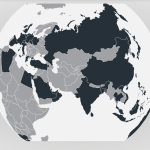The world economy is arguably at a historical watershed. Think of an accelerated industrial revolution, rapidly developing new technology and a big shift in economic power from West to East. These trends are widely accepted, although their magnitude and speed may not be. Naturally, governments and corporates are redirecting their policies and strategies accordingly – and, in the case of corporates, the treasurer is set to play an important enabling role.
By 2030, China will be the world’s largest economy and India the third largest, according to HSBC research1. The paper forecasts that between now and then, emerging markets will make up about 70% of global economic growth, compared to its 50/50 split with developed markets over the past decade. Demographically, Africa will have a larger working-age population than China.
This major shift is entwined with the fast development of new technologies that are set to speed the growth of emerging markets. Governments are actively positioning their countries to gain, in a kind of economic nationalism. Those in emerging markets scent opportunity. Those in the developed world are acting both opportunistically and defensively. They want to be at the forefront of new technology and to export high-value technologies – but they’re acting to protect their citizens from being victims of globalisation.
Some governments are looking to diversify; others to pivot into other sectors. The highest profile example of a national economic initiative is ‘Made in China 2025’, which is designed to foster an evolution from being the world’s factory to being a high-value manufacturer, leading in industries of the future such as energy saving, information technology, biotech and new materials2. Also in Asia, India is seeking to pivot into manufacturing through its ‘Make in India’ strategy, which aims to encourage international companies to manufacture there3.
Sign up for free to read the full article
Register Login with LinkedInAlready have an account?
Login
Download our Free Treasury App for mobile and tablet to read articles – no log in required.
Download Version Download Version























